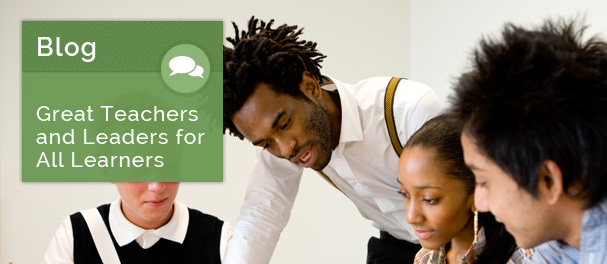Building Positive Relationships in Truly Disadvantaged Schools
I have studied schools where teachers broke down in class, smoldered as they burned out in the teachers’ lounge, or quit. I also have seen these teachers’ behaviors turn around—along with student behaviors and academics. Examples:
- A school in the South Bronx, New York, where student behavior and achievement improved, and teachers—instead of leaving—recruited their friends.
- A school in the poorest part of Guam, where teachers—instead of running home at the end of the day—stayed around, interacted with students, and planned.
- A school in the poorest ZIP code in Salt Lake City, Utah, where teachers—instead of locking themselves in their rooms before class—opened their doors and invited students in.
- A school in East Tampa, Florida, where teachers and administrators walked their students home to the housing projects and made friendly connections with students’ parents.
Unfortunately, relationship turnarounds like this are all too rare, and few teachers or students get the supports that prompt students to describe their teachers (as students in one Chicago school did) as “another set of parents…like Aunties and Uncles.”
In any school, poor relationships between students and teachers frustrate teachers, contribute to teacher attrition, and hinder student learning. But relationship challenges and the teacher attrition they spur are more common and do more harm in high-poverty schools
In Organizing Schools for Improvement, Tony Bryk and his colleagues characterized such schools as “truly disadvantaged schools”—those in neighborhoods with extreme poverty, racial segregation, and the highest levels of violence, child neglect, and abuse. In Chicago, students in these schools were three to four times more likely to stagnate in reading and math compared to students in better off, racially integrated schools.
A disproportionate number of children in truly disadvantaged schools live with traumatic stress and experience hunger or the unexpected loss of a parent or other extreme deprecations. Although, thanks largely to their relationships with caregivers, some children are resilient or are protected, others less fortunate come to school with compromised abilities to focus, self-regulate, interact with others, and learn.
The challenge of teaching such students multiplies with numbers and class size, which compromises teachers’ ability to support and form productive relationships with every student. As Sir Michael Rutter has shown, the proportion of aggressive peers influences other children’s tendency to become aggressive and to value aggression. Luckily, organizations like Turnaround for Children, the organization that helped put the South Bronx school on the right track, are addressing this issue.
The needs of students in high-poverty schools often overwhelm the school student support systems and teachers’ capacity to connect with and engage these students. Then problems start cascading. Teachers and principals may ignore, punish or remove the students, only to stimulate off-task behavior, disorder, and academic problems and ultimately demoralize staff—leading to teacher and leader burnout and attrition, and, eventually, students’ inequitable access to effective educators.
Three things often exacerbate these challenges: (1) a lack of a shared understanding among teachers and school leaders of trauma’s impact on child development; (2) a cultural disconnect among educators, students, and families that makes it harder for educators to identify student strengths and engage families; and (3) the pressures of high-stakes accountability.
To address these myriad challenges, teachers and leaders need systemic supports to expand both their social-emotional competence and their technical competence to build strong conditions for learning. The first means managing stress, handling anger, being self-reflective, and understanding, and preventing implicit bias. The second means understanding the impact of trauma and acting in trauma-sensitive ways, differentiating instruction, and classroom organization.
So how do we provide these systemic supports for teachers and leaders? A few successful strategies:
- Focus school culture on providing caring environments where all students become academically proficient as well as social and emotionally competent.
- Prioritize time for planning, and create communities of practice for teachers and leaders to draw support and expertise from one another.
- Provide professional development on trauma-informed approaches to student engagement, positive behavioral support, social-emotional learning, supportive school discipline, and tiered academic and social-emotional support.
Now it’s your turn. We want to hear your thoughts.
Teachers and Leaders: What supports have you found most effective in helping you to meet the social and emotional needs of your students?
Everyone: What can state and district leaders do to support both educators and students in developing safe, supportive schools?
David Osher, Ph.D., is vice president of American Institutes for Research (AIR), co-director of AIR’s Human and Social Development Program, and an AIR Institute Fellow. He currently serves as principal investigator for the Technical Assistance Partnership for Child and Family Mental Health; the National Evaluation and Technical Assistance Center for the Education of Children and Youth Who are Neglected, Delinquent, or At Risk; the National Center on Safe Supportive Learning Environments; and the National Clearing House on Safe and Supportive Discipline.



Add new comment